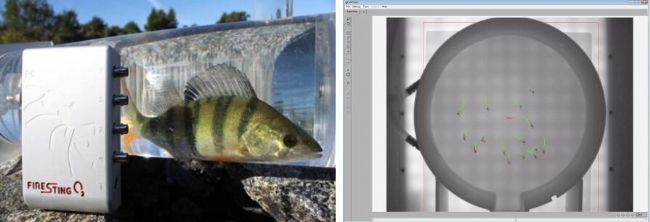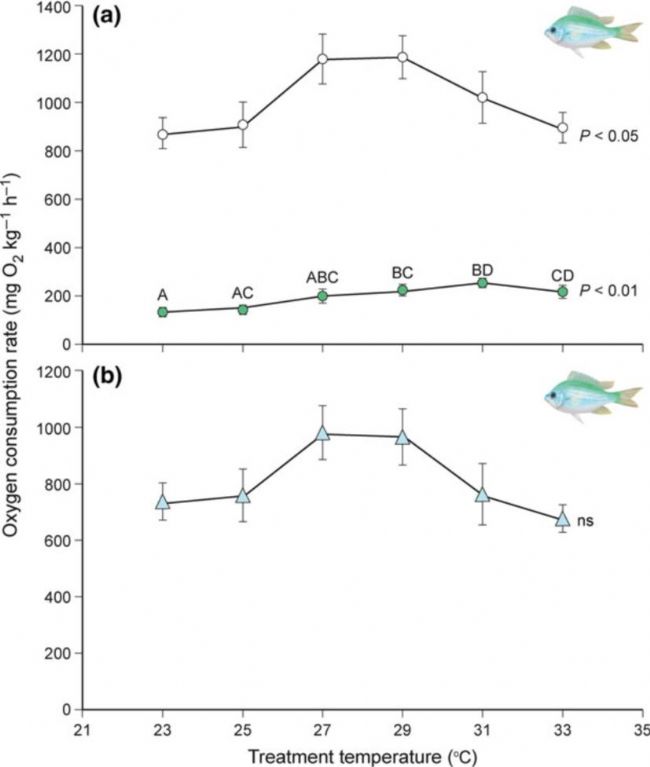Research case - the impact of climate change on fish behavior and energy metabolism
The current climate change issue is a hot spot of concern to the international community. The impact of climate change on the earth's ecology is all-round. The ocean is the main carrier of the energy stored in the climate system. The impact of climate change on the fish that live in it cannot be ignored. Climate change affects the climate change patterns of the oceans and the changes in marine environmental factors (seawater warming, seawater acidification, eutrophication, seawater oxygenate changes, ocean circulation changes, etc.), which are directly affected by fish individuals. Or the indirect effects of the ecosystem food chain transfer affect marine fish, including the physiology (growth, reproduction, migration), phenology, resources and distribution of fish, and form an impact on the entire marine ecosystem.

In 2018, "Diversity" published a research paper by Taryn D. Laubenstein of James Cook University in Australia, which described an important marine economic fish - yellowtail kingfish ( Seriola). Lalandi ) Metabolic characteristics (oxygen consumption rate) and behavioral characteristics in the case of environmental changes such as seawater acidification and elevated water temperature.
The experiment used laboratory control of water temperature and water CO2 to study the hatching of fish eggs and the growth of juvenile fish. The behavior of fish was observed and analyzed using the Lolitrack animal behavior observation and analysis system . The measurement was performed using RF-O2 fluorescent fiber oxygen measurement system. The oxygen consumption rate of fish, data are summarized, statistically analyzed. The research data show that the effect of water temperature increase on the behavior and physiological characteristics of juvenile fish is greater than that of water. The increase of CO2 concentration does increase the resting of fish. Resting oxygen uptake rates, and intricate interrelationships with changes in water temperature. Their findings confirm the response of large pelagic fish to ocean acidification and warming, provide new behavioral and physiological data and confirm the correlation between these characteristics, as well as these correlations and fish. The class adapts to the relationship of global climate change.

Adam Habary of the ARC Centre of Excellence for Coral Reef Studies published in "Global Change Biology" in 2016 entitled "Adapt, move or die – how will tropical coral reef fishes cope with ocean warming?" The paper studies the aerobic metabolism and stress response to temperature changes in tropical coral reef fish under the influence of ocean warming. The results reflect the adaptation of fish to the environment in the context of warming ocean water temperature. Evasion behavior.
The experiment selected the blue-green damselfish (Chromis viridis), a coral-reef fish model species sensitive to temperature, using laboratory simulations to control changes in water temperature, using multi-channel breathing chamber measurements, using RF- O2 fluorescent fiber oxygen measurement system measures fish's maximum metabolic rate (MMR), standard metabolic rate (SMR) and aerobic metabolic scopes (AMR), using Lolitrack animal behavior observation and analysis system The observation and analysis of the preferences and evasive behavior of fish in the shuttle pool system at different temperatures were carried out.

Yi Ketai Ecological Technology Co., Ltd. provides comprehensive solutions for fish behavior and energy metabolism research technology:
- RF-O2 Fluorescent Fiber Oxygen Sensor Technology for Respiratory and Energy Metabolism in Fish and Other Aquatic Organisms (eg, Zooplankton, Shellfish, Crustaceans, etc.)
- Techniques for observing behaviors of aquatic animals such as fish, including observations of behavioral activities, measurement and analysis of the environmental preference of the shuttle pool, etc.
- Physiological and ecological monitoring of fish, including fish body temperature and activity recorder, ambient temperature, salinity, dissolved oxygen, etc.
- Fish and aquatic animal environmental control systems, including temperature, dissolved oxygen, seawater acidification control systems, etc.
- High-throughput aquatic animal breathing and energy metabolism measurement system for micro-small fish and aquatic animals such as zebrafish, high-throughput energy metabolism observation and analysis

Electric Wheelchair is an important Household Medical Equipment for the wounded, sick and disabled at home for rehabilitation, turnaround transportation, medical treatment, and outings. The Wheelchair not only meets the needs of the physically disabled and the disabled, but more importantly, it is convenient for family members to move and take care of them. Patients, so that patients with the help of wheelchairs for physical exercise and participation in social activities.
Manual Hospital Wheelchair are generally composed of a foldable frame, front and rear wheels, left and right knee pads and footrests, left and right detachable armrests, handle brakes, seats, backrests with medical imaging data bags, bedpans, urine bag hooks, and electric standing. The hand-crank wheelchair adds a hand-crank device on the basis of the ordinary wheelchair. On the basis of ordinary wheelchairs, the electric wheelchair adds an electronic power assist system, which reduces the physical exertion of the user. Based on the electric wheelchair, the intelligent wheelchair adds positioning movement, standing movement, remote control movement and related Internet + assisted living.
Electric Wheelchair,Rehabilitation Electric Wheelchair,Manual Hospital Wheelchair,Remote Control Wheelchair
Haloxylon Ammodendron Medical Equipment Co., Ltd. , https://www.ssmedicaldevic.com